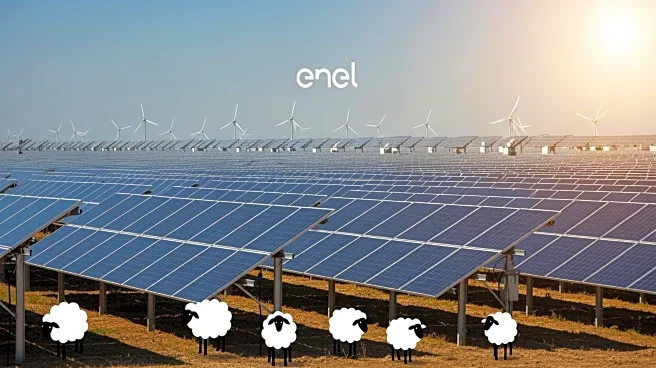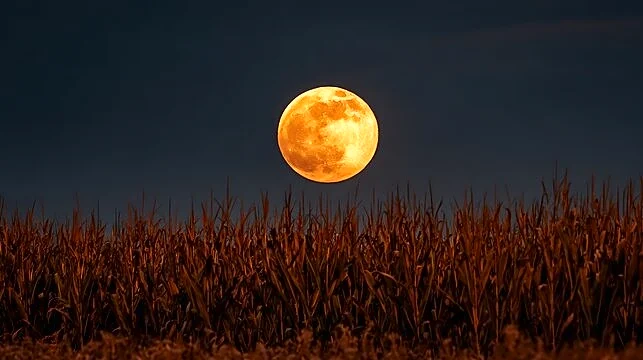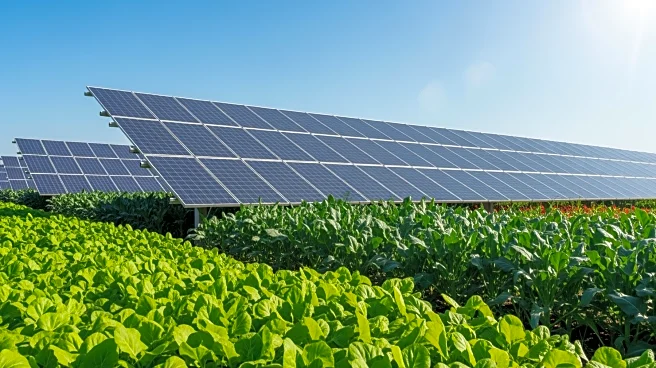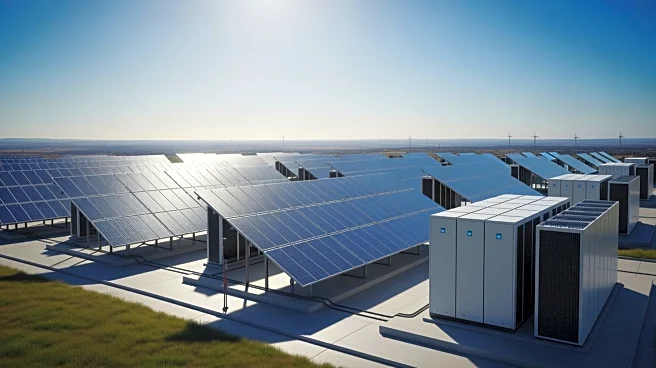What's Happening?
Enel, a global energy firm, has launched its largest solar power plant in the United States, located in Wharton County, Texas. The GulfStar solar power plant, with a capacity of 556 megawatts (dc), incorporates a battery energy storage system (BESS) of 355
megawatts, bringing the total capacity to 911 megawatts. This facility is unique as it integrates sheep grazing as part of its vegetation management strategy, a practice known as agrivoltaics. Enel has partnered with Texas Solar Sheep Co. to manage vegetation across more than 10,000 acres using 6,000 sheep. This initiative not only aids in maintaining the solar panels but also supports local agriculture by providing natural fertilizer and reducing maintenance costs.
Why It's Important?
The integration of agrivoltaics in solar power plants represents a significant advancement in sustainable energy practices. By combining solar energy production with agricultural activities, Enel is enhancing the economic viability of solar farms and supporting local farmers. This approach helps in reducing operational costs and promotes environmental sustainability. The GulfStar project also highlights the growing importance of energy storage systems in ensuring grid reliability, especially in states like Texas, which have unique grid challenges. The initiative could serve as a model for other states and countries looking to balance energy production with agricultural needs.
What's Next?
The solar grazing movement is expected to expand further, with organizations like the American Solar Grazing Association (ASGA) leading workshops and certification courses for solar developers. These efforts aim to strengthen partnerships between solar developers and farmers, providing new growth opportunities for the agricultural sector. State policymakers are also stepping in to support agrivoltaics, with New York State launching a $7 million demonstration and research program. As the movement gains traction, more states may adopt similar initiatives, potentially influencing federal energy policies.
Beyond the Headlines
The use of sheep in solar farms is not just a cost-saving measure but also a step towards more integrated and sustainable land use practices. This approach could lead to broader acceptance of renewable energy projects in rural areas, where land use conflicts often arise. By demonstrating the compatibility of solar energy with traditional farming, Enel and similar companies are paving the way for more harmonious coexistence between energy production and agriculture.














